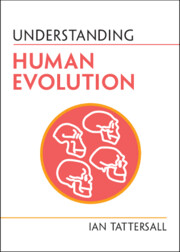Book contents
- >Understanding Human Evolution
- Series page
- Understanding Human Evolution
- Copyright page
- Reviews
- Dedication
- Frontispiece
- Contents
- Maps
- Foreword
- Preface
- Acknowledgments
- 1 Evolution
- 2 Technology: Dating, Diets, and Development
- 3 Discovery and Interpretation of the Human Fossil Record: The Early Days
- 4 Discovery and Interpretation of the Human Fossil Record: Later Developments
- 5 Early Bipeds
- 6 The Muddle in the Middle
- 7 Homo heidelbergensis and the Neanderthals
- 8 The Emergence and Spread of Homo sapiens
- Epilogue
- Summary of Common Misunderstandings
- References and Further Reading
- Figure Credits
- Index
1 - Evolution
Published online by Cambridge University Press: 21 July 2022
- >Understanding Human Evolution
- Series page
- Understanding Human Evolution
- Copyright page
- Reviews
- Dedication
- Frontispiece
- Contents
- Maps
- Foreword
- Preface
- Acknowledgments
- 1 Evolution
- 2 Technology: Dating, Diets, and Development
- 3 Discovery and Interpretation of the Human Fossil Record: The Early Days
- 4 Discovery and Interpretation of the Human Fossil Record: Later Developments
- 5 Early Bipeds
- 6 The Muddle in the Middle
- 7 Homo heidelbergensis and the Neanderthals
- 8 The Emergence and Spread of Homo sapiens
- Epilogue
- Summary of Common Misunderstandings
- References and Further Reading
- Figure Credits
- Index
Summary
The notion that our planet and its inhabitants have not remained exactly as the Creator was supposed to have made them was in the air long before 1859, when the English natural historian Charles Darwin collected and published his evolutionary ideas in his great work On the Origin of Species by Means of Natural Selection. By that time geologists had long known that the 6,000 years allowed by the Bible since the Creation was vastly inadequate for the sculpting of the current landscape by any natural mechanism; and the biologists who were just beginning to study the history of life via the fossil record were not far behind them. Around the turn of the nineteenth century, the French zoologist Jean-Baptiste Lamarck began to argue that fossil molluscan lineages from the Paris Basin had undergone structural change over time, and that the species concerned were consequently not fixed. Importantly, he implicated adaptation to the environment as the cause of change, although the means he suggested – subsequently infamous as “the inheritance of acquired characteristics” – brought later opprobrium.
Keywords
- Type
- Chapter
- Information
- Understanding Human Evolution , pp. 1 - 17Publisher: Cambridge University PressPrint publication year: 2022

